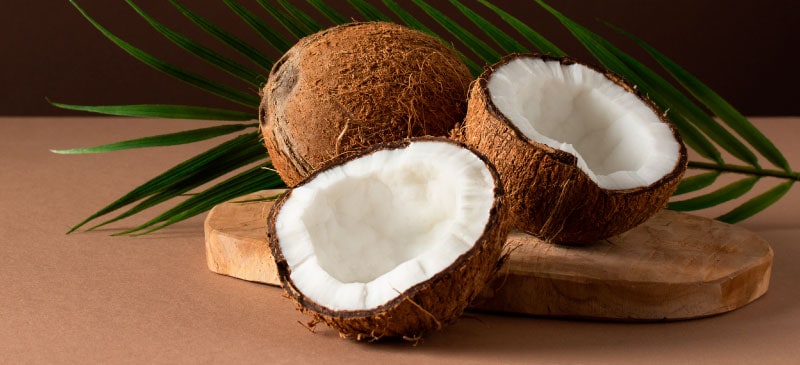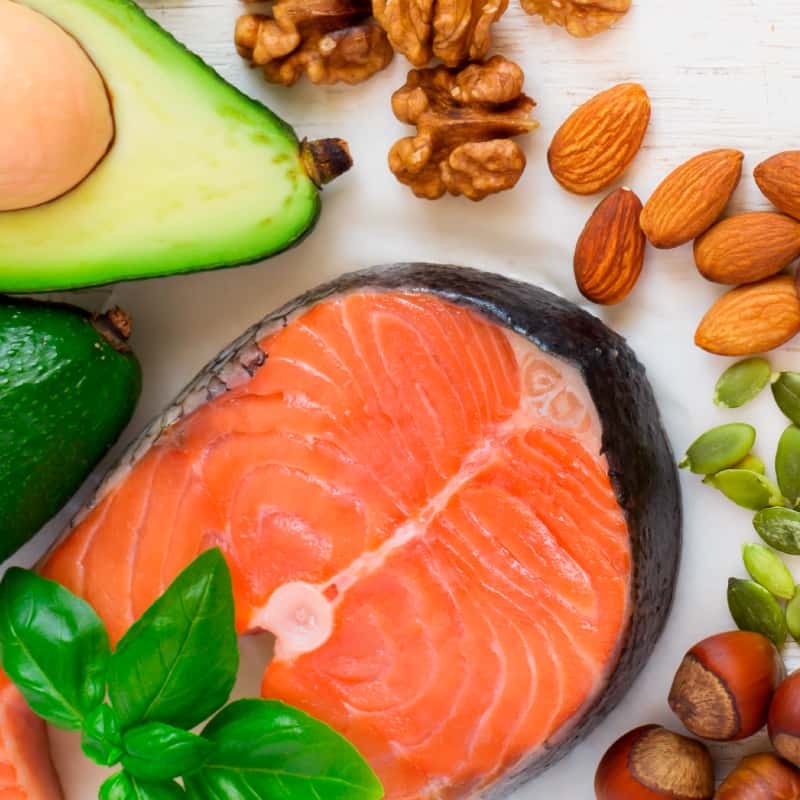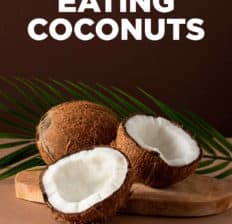This Dr. Axe content is medically reviewed or fact checked to ensure factually accurate information.
With strict editorial sourcing guidelines, we only link to academic research institutions, reputable media sites and, when research is available, medically peer-reviewed studies. Note that the numbers in parentheses (1, 2, etc.) are clickable links to these studies.
The information in our articles is NOT intended to replace a one-on-one relationship with a qualified health care professional and is not intended as medical advice.
This article is based on scientific evidence, written by experts and fact checked by our trained editorial staff. Note that the numbers in parentheses (1, 2, etc.) are clickable links to medically peer-reviewed studies.
Our team includes licensed nutritionists and dietitians, certified health education specialists, as well as certified strength and conditioning specialists, personal trainers and corrective exercise specialists. Our team aims to be not only thorough with its research, but also objective and unbiased.
The information in our articles is NOT intended to replace a one-on-one relationship with a qualified health care professional and is not intended as medical advice.
Coconuts: Top 10 Coconut Benefits + How to Eat
January 11, 2024

Coconuts are considered one of the healthiest fruits in the world, and for good reason. They are packed with healthy fats, antioxidants and important micronutrients and help protect organs. Today, coconut is used in a number of food products, including coconut oil, flour, milk and water.
The fruit can be found in just about every aisle of the grocery store in one way or another.
Packed with nutrients, including medium-chain triglycerides that have several health benefits, it’s a quick source of energy for the body and helps fight infections and chronic disease.
Coconut Products
There are several types of products made from coconut, and they all serve different purposes in cooking and body care. Here’s a breakdown of what forms of the fruit you’ll find at your local store:
- Coconut meat: The inner white lining of the outer husk is the meat. It’s firm and can be scraped from the inside and eaten raw or used to make other coconut products, like oil, milk and flour. Dried coconut meat is often used as a snack or added to baked goods, yogurt parfaits and more.
- Coconut oil: Made by pressing dried or fresh coconut meat, coconut oil is made up of fats in the fruit that become liquid when temperatures hit about 78 degrees Fahrenheit. Coconut oil for skin, hair and cooking is very popular because of its antibacterial, anti-inflammatory and soothing properties.
- Coconut milk: The liquid (also called coconut cream) found inside mature coconut meat, coconut milk contains natural fatty acids and can be used in smoothies, baked goods and sauces for a creamy texture. It can be found boxed and in cans at most grocery stores but can also be made at home. To make coconut milk, chop and blend the meat until it creates a thick liquid, and then strain it.
- Coconut flour: It’s not actually “flour” but made from ground and dried coconut meat to create a flour-like texture that can be used in baking. Coconut flour doesn’t contain any grains, and it’s a favorite among gluten-free and Paleo dieters. It has become widely available in grocery stores and can be used to make pancakes, muffins, cookies and other goods that require a floury substance.
- Coconut water: The clear liquid found inside a young, green coconut, coconut water contains vitamins, minerals and phytochemicals. It is consumed for electrolyte replacement and supporting detoxification.
- Coconut butter: Not your typical butter, coconut butter is made from the fruit’s meat when it’s ground to create a butter-like consistency. It can be used as a topping to baked goods or in recipes to provide a creamy texture.
- Coconut sugar: Although not from the coconut fruit, coconut sugar is made from the sap of the palm tree’s flower bud stem. The sap is boiled and dehydrated, leaving behind brown-colored sweet granules that can be used in baking and cooking.
- Coconut aminos: Aminos contain only two ingredients, coconut tree sap and sea salt. Coconut sap is “tapped” from coconut blossoms, the flowering portion of the tree present before coconuts grow. It then goes through a fermentation process and is blended with sun-dried, mineral-rich sea salt to create coconut aminos.
Nutrition Facts
Coconuts are rich in nutrients, namely healthy medium-chain fatty acids. The three fats most abundantly found in them include caprylic acid, lauric acid and capric acid.
Unlike long-chain fatty acids found in plant-based oils, medium-chain fats are easier to digest, provide immediate energy and aren’t readily stored as fat.
One piece of raw coconut meat (about 45 grams) contains approximately:
- Calories: 159
- Total Carbohydrates: 6.8 g
- Fiber: 4 g
- Sugar: 2.8 g
- Total Fat: 15.1 g
- Saturated Fat: 13.4 g
- Polyunsaturated Fat: 0.2 g
- Monounsaturated Fat: 0.6 g
- Trans Fat: 0 g
- Protein: 1.5 g
- Sodium: 9 mg (0.4% DV*)
- Manganese: 0.7 mg (30% DV)
- Copper: 0.2 mg (22% DV)
- Selenium: 4.5 mcg (8% DV)
- Iron: 1.1 mg (6% DV)
- Zinc: 0.5 mg (5% DV)
- Phosphorus: 50.8 mg (4% DV)
- Potassium: 160 mg (3% DV)
- Magnesium: 14.4 mg (3% DV)
- Folate: 11.7 mcg (3% DV)
- Thiamine: 0.03 mg (3% DV)
*Daily Value: Percentages are based on a diet of 2,000 calories a day.
Benefits
Here are some of the top coconut benefits:
1. Provides Energizing Healthy Fats
A majority of the fats in this fruit are medium-chain triglycerides (MCTs), which metabolize in the body differently than other types of fats. MCTs serve as an immediate source of energy that goes through a three-step process to be turned into fuel, as opposed to long-chain fatty acids that go through a 26-step process.
MCTs are easier to digest, and they’re smaller in size, allowing for easier cell permeability. These fats aren’t stored as fat. They’re processed by the liver and converted into energy immediately.
Additionally, the healthy fats help improve brain and memory function, reduce inflammation, and may help improve levels of good (HDL) cholesterol. Recent research also suggests that eating MCTs may reduce your calorie intake compared to the effects of long-chain fatty acid consumption.
2. Rich in Manganese
Coconut is an excellent source of manganese, an essential mineral that’s needed for several body functions. Studies indicate that manganese supports bone health, cognitive function and the respiratory system. It also helps maintain healthy iron levels, speeds up wound healing and helps with weight loss.
3. Has Antibacterial Effects
Coconut contains lauric acid, which has been found to have antibacterial properties. Lauric acid is a particular type of fatty acid that has impressive immune-enhancing effects. It converts to monolaurin in the body, which is known as a powerful antibacterial agent.
For this reason, coconut is often used on hair, skin and teeth to kill bacteria, and it can be eaten to inhibit bacterial infections, such as staph or food poisoning. Additionally, lauric acid and other fats help fight fungal and viral infections.
4. Provides Fiber
Coconut is a good source of fiber, which helps regulate healthy digestion, reduce LDL cholesterol and triglyceride levels, and strengthen the colon walls. Eating high-fiber foods also supports healthy blood sugar control and prevents insulin resistance.
5. Contains Powerful Antioxidants
Consuming coconut has proven to help improve human antioxidant status, meaning it helps prevent fat and protein oxidation that can lead to disease. The main antioxidants found in coconuts include caffeic acid, salicylic acid and gallic acid. These help neutralize free radicals and protect cells from damage.
6. May Help Control Blood Sugar
A study published in Journal of Complementary and Integrative Medicine had 80 volunteers eat a standardized diet along with either 100 grams of fresh coconut or 100 grams of groundnuts or groundnut oil for 90 days. After the 90 days, both groups saw reductions in fasting blood sugar levels, with the coconut group seeing big improvements along with a significant reduction in body weight.
7. Shows Promise in Combating Alzheimer’s Disease
Since the MTCs can be converted into ketone bodies, this fruit is believed to be beneficial in both helping patients with Alzheimer’s improve cognition as well as potentially help stave off the disease in the first place.
A pilot study out of Spain found that patients with Alzheimer’s disease saw improvements in cognition after consuming a Mediterranean diet enriched with coconut oil. Forty-four Alzheimer’s patients were randomly divided into two groups (22 people in each group): one who follow a coconut oil-enriched Mediterranean diet for 21 days and a control group.
What did researchers find? “After intervention with coconut oil, improvements in episodic, temporal orientation, and semantic memory were observed,” according to the study authors.
8. Versatile and Easy to Incorporate to Diet
Given the vast array of products made from this fruit, it’s easy to add to your diet. It pairs well in all types of foods (more on that below), and you can choose the fruit itself, in addition to coconut oil, flour, water, etc.
9. Helps Improve Teeth Health
Coconut oil pulling is a great way to improve oral health and get a glowing smile. It can do everything from combat tooth decay, lessen plaque and gingivitis, improve bad breath, and help whiten teeth.
10. Fights Yeast Infections
Candida albicans can lead to a yeast infection. Thankfully, research shows coconut oil can decrease gastrointestinal colonization by C. albicans, thus reducing the risk of getting a yeast infection.
Risks and Side Effects
A coconut allergy is possible, but it’s rare. If you experience allergy symptoms, such as itchiness, redness, swelling or trouble breathing, stop consuming coconuts immediately.
Just because a product is made with coconuts doesn’t mean it’s healthy. Many items, including dried coconut and oils, may be bleached, refined, chemically processed or include added ingredients, like sugars and preservatives. Make sure to read the label carefully and choose products made from extra virgin coconut oil whenever possible.
This fruit is high in calories, so it should be consumed in moderation. A little goes a long way and will boost energy levels almost immediately, but don’t overeat foods made with it.
How to Open a Coconut (Plus Recipes)
Coconuts have a hard outer husk that protects the nutritious fruit meat inside. It may seem nearly impossible to open this fruit, but there is a method that makes it much easier.
A mature coconut has a hard shell with brown hairy fibers on the outside. If you’re choosing one to purchase, make sure there are no cracks or moldy areas.
Here’s how to open one:
- To open it, start by poking three holes into one end with a clean skewer or screwdriver. This is to release the water, so you’ll want to place a cup underneath to empty the fruit.
- Next, hold it with a kitchen towel, and using a clean hammer or mallet, tap the equator of the fruit, going all the way around until it cracks in half. Then use the mallet to break the fruit into a few large pieces.
- Finally, use a butter knife to lift the meat away from the shell. If there’s any brown skin left behind, use a peeler to remove it.
Now you have fresh coconut meat and water! The meat can be grated or chopped to make an excellent topping or snack.
Wondering about other ways to use coconut products? Here’s a rundown of food and body care recipes to get you started …
Food Recipes:
- Coconut Flour Pancakes
- Berry Chia Seed Smoothie Bowl
- Chocolate Caramel Coconut Flour Brownies
- Thai Coconut Soup with Chicken & Ginger
- Coconut Kefir
Body Care Recipes:
- Homemade Anti-Dandruff Shampoo with Coconut Milk
- Homemade Coconut Lavender Shampoo
- DIY Hair Mask for Damaged Hair
- DIY Coffee Scrub
Conclusion
- Coconut is known as one of the healthiest foods on the planet, which is why it’s used to make several healthy food and body products. From coconut oil to coconut milk and flour, there are many forms of the fruit out there.
- It is consumed around the world because it’s loaded with nutrients, including healthy fats, fiber and minerals like manganese. It also aids digestion, boosts bone and brain health, and helps fight bacteria.
- It can be used in recipes, on your skin and hair, and even to clean your teeth.









